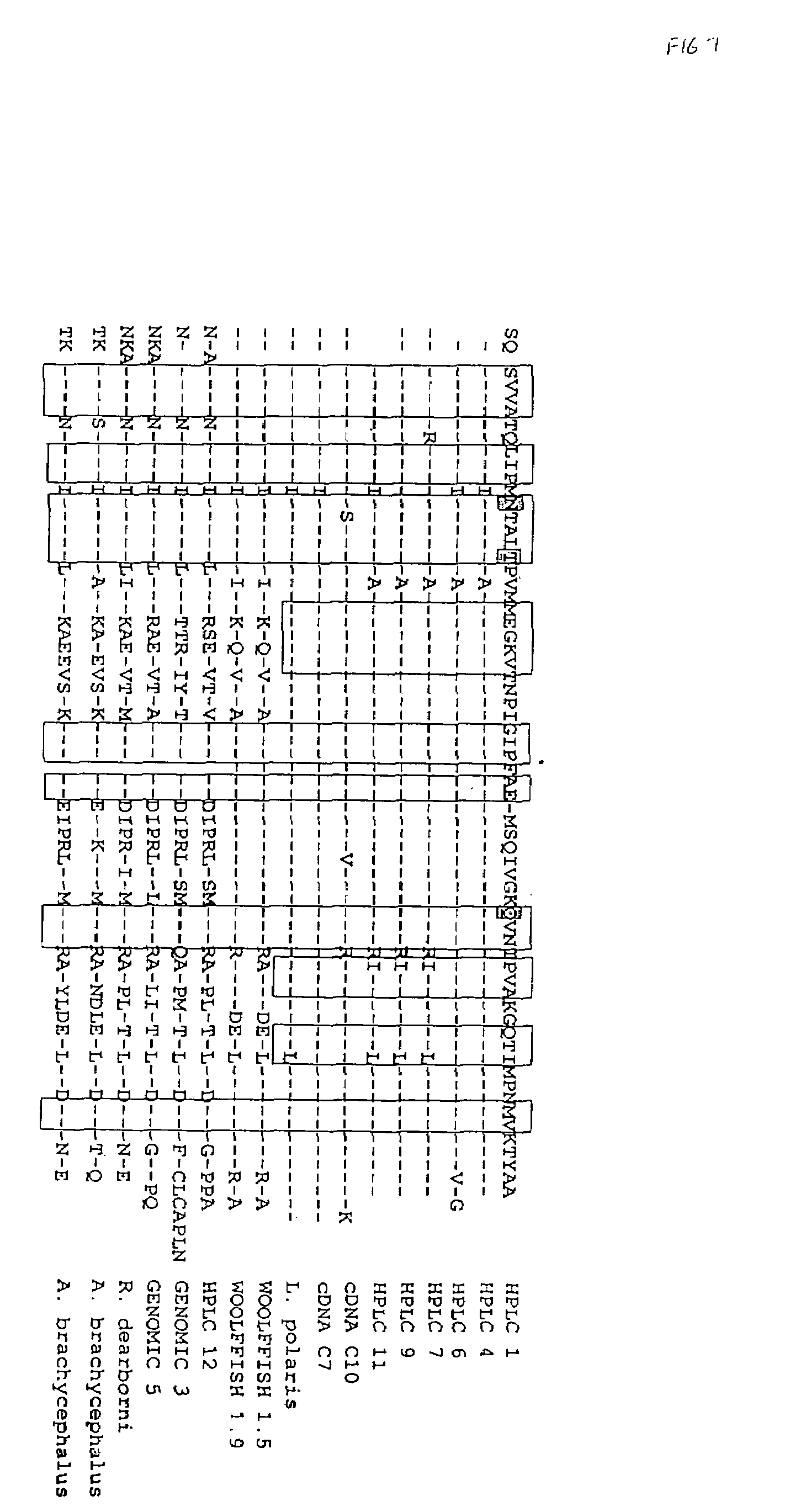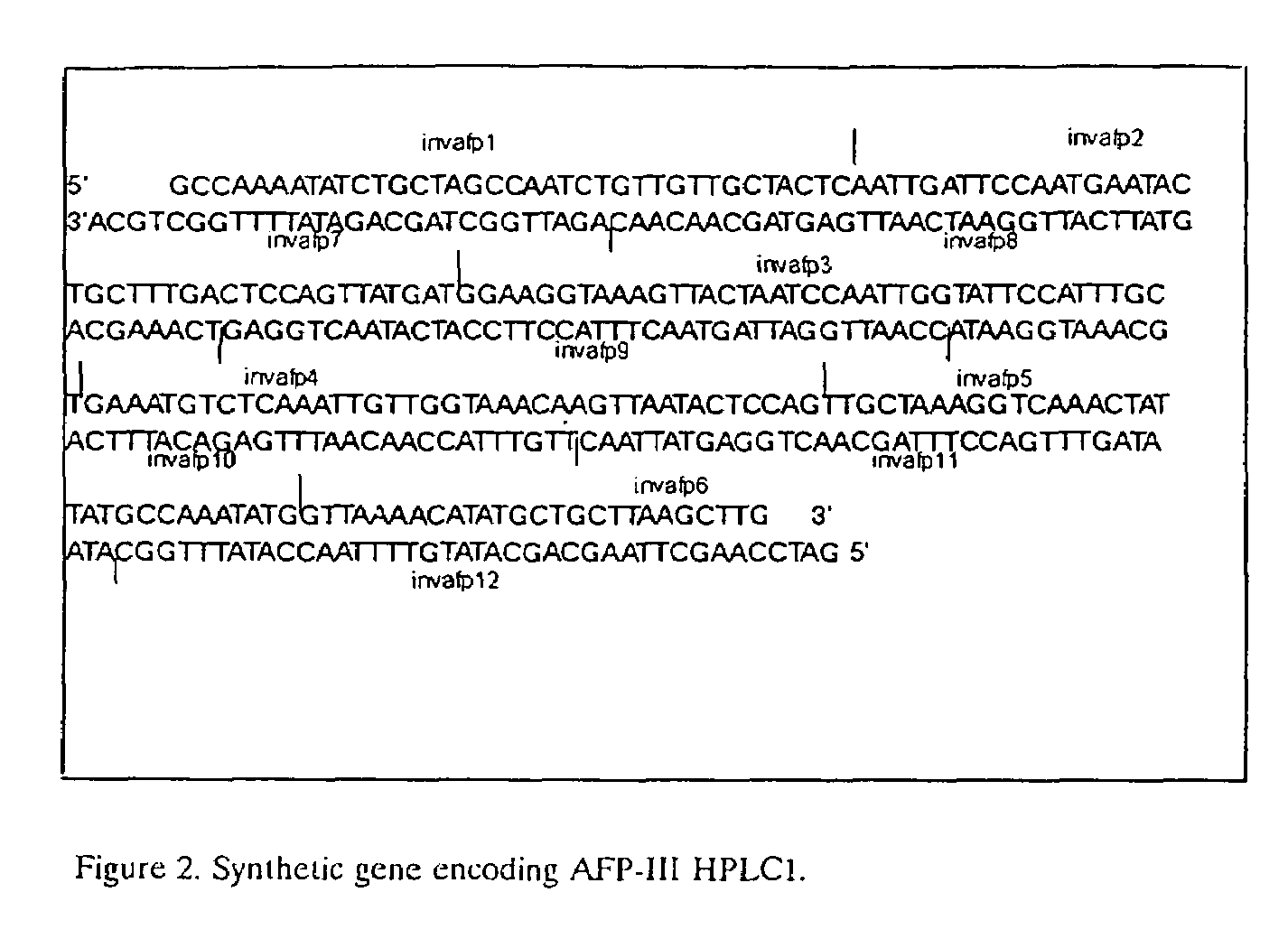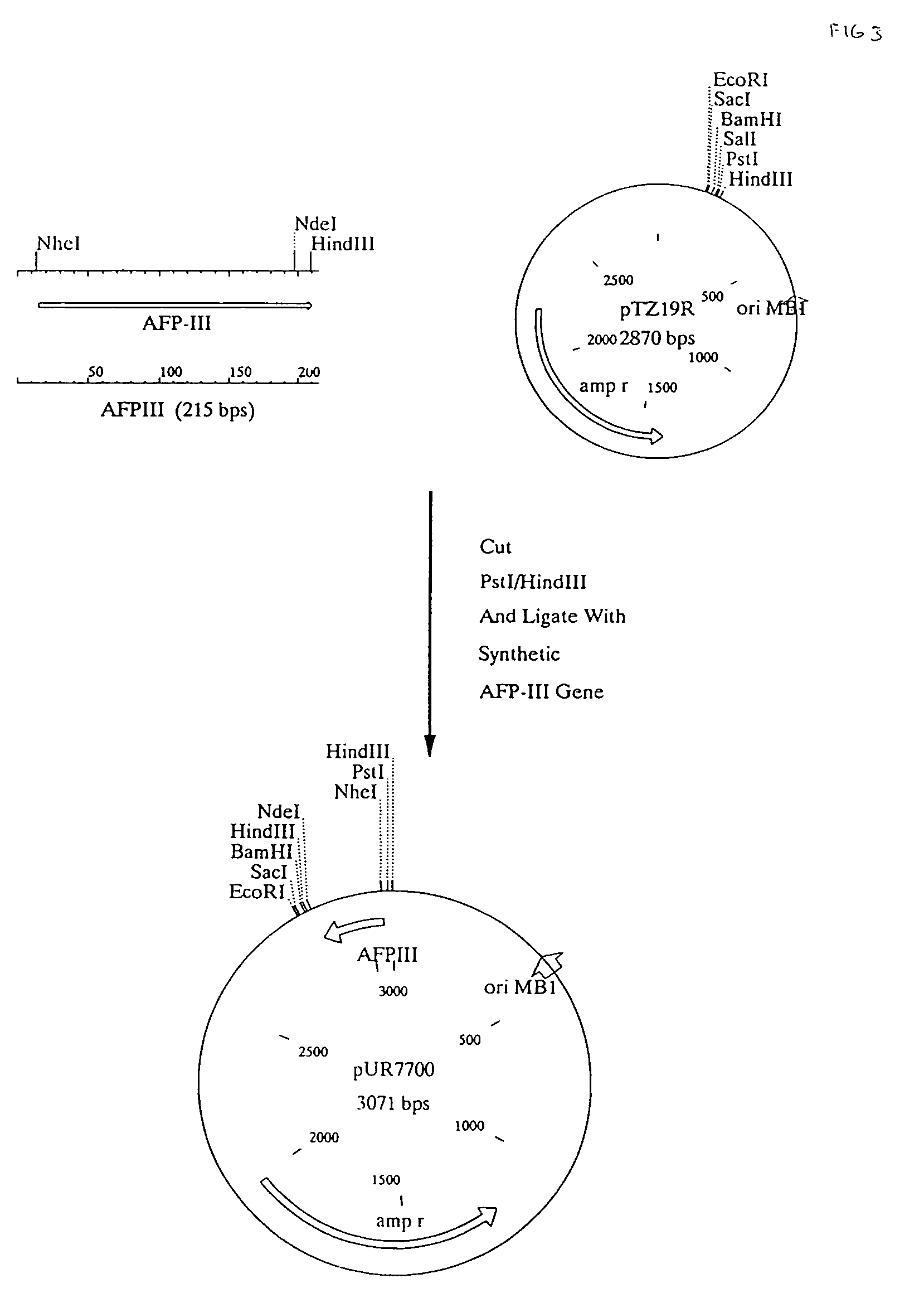Recombinant peptide
a technology of recombinant peptide and peptide, which is applied in the direction of peptides, peptide sources, other chemical processes, etc., can solve the problems of inability to obtain the secretion of a sufficiently active monomer of type-iii afp, and the treatment of peptide as a monomer was considered unacceptable for industrial production purposes
- Summary
- Abstract
- Description
- Claims
- Application Information
AI Technical Summary
Benefits of technology
Problems solved by technology
Method used
Image
Examples
example 1
Construction of a Synthetic Gene Encoding a Type III AFP
[0069]A nucleotide sequence encoding the HPLC I antifreeze peptide, optimised for expression in Saccharomyces cerevisiae was constructed as follows: a set of 12 oligonucleotides was synthesized (invafp1, invafp2, invafp3, invafp4, invafp5 invafp6, invafp7, invafp8, invafp9, invafp10, invafp11 and invafp12), mainly comprising the DNA sequence of the mature AFP expressed in preferentially used S. cerevisiae codons. The synthetic gene was designed to contain 5′ single stranded regions compatible with PstI and HindIII generated sticky ends. (FIG. 2)
[0070]For the assembly of the synthetic AFP gene, 50 pmol of each of the oligonucleotides were dissolved in 12 μl water, incubated for 2 min. at 95° C., and directly placed on ice. After this denaturation step, the oligonucleotides were phosphorylated in a final volume of 20 μl, containing 2.5 mM ATP, 5 mM DTT and about 10 U of polynucleotide kinase, for 40 min. at 37° C., followed by a ...
example 2
Construction of Yeast Expression Vectors Containing a Synthetic Gene Encoding AFP-III HPLC-1
[0072]The synthetic AFP-III gene carried by pUR7700 contains none of the information required for expression of this peptide in yeast. To obtain expression and secretion of this gene, constructs containing translational fusions of the AFP-III gene with a suitable secretion signal sequence must be made and these fusion sequences brought under the control of a yeast gene promoter.
[0073]Suitable secretion signal sequences can be selected from a variety of genes encoding proteins efficiently secreted by yeast. eg invertase encoded by SUC2 or α mating factor, encoded by MFα1 and MFα2. To obtain a suitable fusion with the invertase signal sequence, a PCR fragment was generated containing the invertase signal sequence, part of the GAL7 promoter and a suitable restriction enzyme site to ensure in frame fusion of the invertase signal sequence with the synthetic AFP-III gene.
[0074]To obtain this fragme...
example 3
Expression of AFP-III in S. cerevisiae
[0084]Plasmids pUR7704 and pUR7706 were linearized by digestion with HpaI which targets integration of the plasmids to the yeast rDNA region then subsequently independently introduced into S. cerevisiae strain SU50 by electroporation. Transformants were selected through their ability to grow in the absence of leucine. To achieve expression of the cloned AFP-III genes, transformants carrying pUR7704 or pUR7706, were first grown for 40 hours in liquid minimal medium at 30° C. then subsequently diluted 1:10 in freshly prepared induction medium (Yeast extract 1%, Difco peptone 2%, galactose 5%) and incubated at 30° C. for a further 48 hours. At the end of this period samples of the culture supernatant were tested for their ability to inhibit the growth of ice crystals.
[0085]The growth of ice crystals was examined microscopically over the course of 30-minutes incubation at −6° C. It was clearly demonstrable that supernatant samples derived from yeas...
PUM
| Property | Measurement | Unit |
|---|---|---|
| Fraction | aaaaa | aaaaa |
| Cell angle | aaaaa | aaaaa |
Abstract
Description
Claims
Application Information
 Login to View More
Login to View More - R&D
- Intellectual Property
- Life Sciences
- Materials
- Tech Scout
- Unparalleled Data Quality
- Higher Quality Content
- 60% Fewer Hallucinations
Browse by: Latest US Patents, China's latest patents, Technical Efficacy Thesaurus, Application Domain, Technology Topic, Popular Technical Reports.
© 2025 PatSnap. All rights reserved.Legal|Privacy policy|Modern Slavery Act Transparency Statement|Sitemap|About US| Contact US: help@patsnap.com



